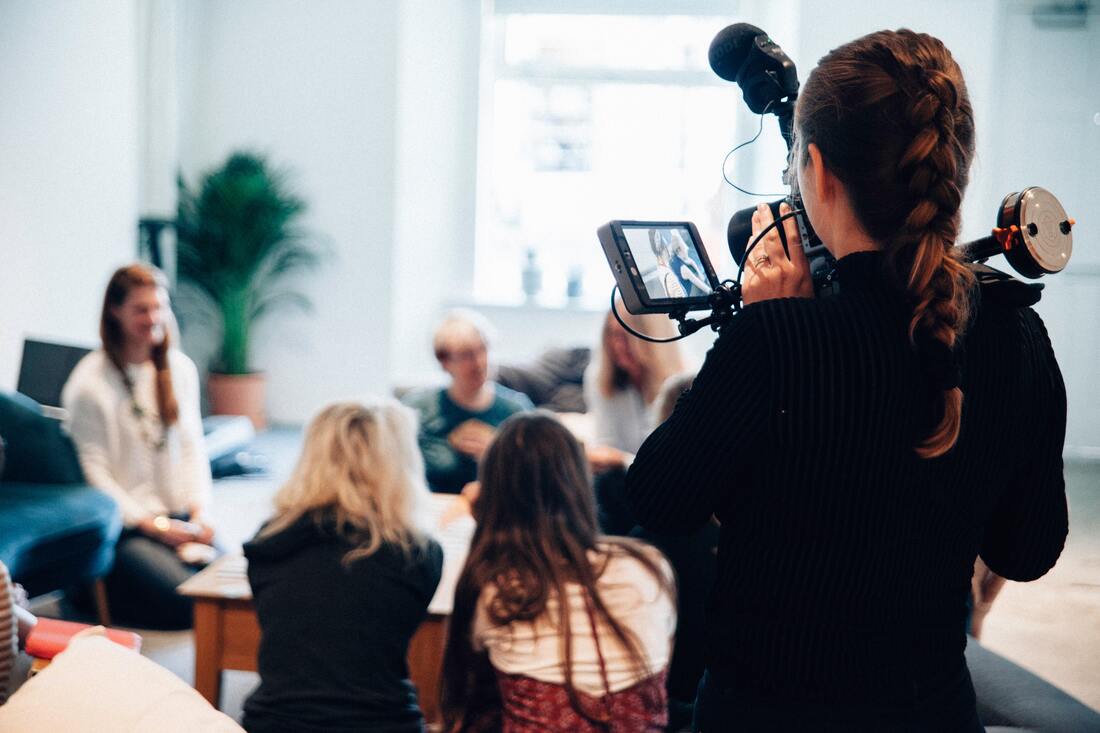|
We live in an image-driven world, and it turns out images are even more attractive when they’re moving. Video is the most common content format being spread organically, with people being twice as likely to share videos with their friends than any other media.
According to Wyzowl’s latest State of Video Marketing survey, the average user spends 19 hours every week watching online videos, that’s an increase of one hour from last year, and nearly double the 10.5 hours it was as recently as 2018. The trendlines are clear - people watched around 14.6bn minutes of video last year, representing an increase of around 20% from 2020 and an increase of 121% compared to 2019, according to Wistia’s 2022 State of Video report. Most businesses - 86% in 2022 - use video as a marketing tool, up from 61% in 2016, while the percentage of marketers saying that video is an important part of their strategy has gone from 78% to 92% in the same period. Virtually everyone who used video marketing last year - 99% of survey respondents - said that they would keep using video in their marketing strategy this year, and most of them will either keep or increase their spend. The main reason? It works! Some 87% of marketers say video helped their ROI increase. Covid-19 has been a major driver here - most marketers said that the pandemic, and the resulting increase in internet use, made them more likely to turn to video to attract audiences. Not only will video help increase traffic to your site, but the vast majority of marketers have also found that it increases users’ dwell time. Those who don’t already use video are increasingly integrating it into their plans, according to Hubspot’s State of Inbound Marketing Trends 2022 report, which found that 35% of marketers are planning to use video in their marketing for the first time this year. Around a third of them plan to invest more in video marketing than in any other channel. Last year, video was the top format used in marketers’ content strategy, and that is not a pattern that is slowing down any time soon. After having a strong year in 2021, marketers are set to use and spend even more on video content throughout 2022. For Amazon sellers, we’ve seen a massive increase in popularity of over-the-top video content, with sellers also routinely using video as a means of boosting their conversion rates, or as part of their A+ content. Types of marketing videosOne of the great advantages of video is how flexible it is as a medium. You can use it to advertise, explain, and implant ideas and values in a customer’s head. Types of video you can produce as part of your campaign include :
Average audience engagement by video length Source: Wistia 2022 State of Video ReportCreating a Strategy: Video is highly likely to yield a positive result even without a strategy in place, but given all the effort that you would be putting in, it would be a huge misallocation of resources to not have a plan. How do you measure success? Who is your audience? How much will you spend? These are all things that you need to work out ahead of time. Otherwise, you will be running blind. Source: Wistia 2022 State of Video ReportThe first step is to determine what you want to do. Set your objectivesLike in any marketing activity, the first thing is to determine what you want to achieve. Are you trying to increase brand awareness? Is there a new product you’re trying to highlight? Have you received feedback on a particular service and need to better educate your customers on how to use it? Just about every choice you make - from how to shoot the video, to how to edit it and where to show it - will flow from whether it gets you closer to achieving that objective, so make sure you have a solid understanding of what the goal is. According to Wistia, the main goals that brands have given for using video are:
The top goals tended to be at the top and middle of the marketing funnel - driving awareness and letting potential users and customers learn more about a product were the main objectives. Brand awareness is one of the first things to go up with the use of video, according to 93% of marketers, according to Wyzowl. A major strength of the format is in its education potential - 94% of Wyzowl’s respondents say that video helped increase user understanding of the offer. This also has the side benefit of freeing up time across other parts of the business - 49% of respondents to Wyzowl’s survey said that video helped reduce their support calls, allowing them to better allocate their internal resources. The ultimate goal of video marketing, of course, is to increase businesses - something at which it seems to be incredibly effective. More than 8 out of 10 marketers say video has contributed to a higher lead generation, while 81% said it directly led to increased sales. Source: Wyzowl The State of Video Marketing 2022 Select your audience Once you know what you want to do, you can decide who you want to target. Chances are you already segmented the market when you were creating your product or service in the first place, so you already have a rough idea of who you want to reach. If you have a multi-pronged strategy that will have various videos on multiple channels depending on the product, then you will need to weigh the benefits of each channel (of which more is explained below) and think about who uses them and how. For more generalized campaigns, however, that perhaps are just meant to reinforce brand association and values, you can broaden the message for mass appeal. Establish your messagingWith your objective and audience in mind, the main question is, what are you trying to say? What is it you want them to come away with once they see your video? Again, videos are most effective at the top and middle of the tunnel, at raising awareness and getting prospective customers to check out your products. But a blindspot of the funnel approach has been that the process ends with the purchase - a customer buying an item was the ultimate goal, and once it’s achieved you’re on to the next one. There is no accounting for the potential momentum and word-of-mouth that can get those customers to promote your product themselves. Hubspot’s Flywheel model goes further than simply getting the customer to buy something. Its basic premise is to turn people that are strangers to your brand into promoters of your brand. The model consists of three main stages, and your objective should determine at which stage your message should be focused:
In terms of video subject, the most engagement from audiences came from product videos, followed by webinars and social media videos. At the bottom of the list were sales videos and blogs. This highlights an important point that you should keep in mind - people don’t generally like feeling like they’re on the receiving end of a hard sell. Make the video interesting, highlight your product benefits, and entertain your audience, but don’t try to force-feed them. Source: Wistia 2022 State of Video Report Select your budget Making a video doesn’t come cheap, especially if you want it well done. There’s little point putting something out if it looks shabby - this means getting it professionally done, which is not something all companies can do in-house. Your budget will be impacted by the time it takes to produce. As it is a collaborative effort, depending on the input of many people, there can be unexpected delays that need to be accounted for in the planning process Source: Wyzowl The State of Video Marketing 2022 Select a channel for your videoOnce you know your audience and how much budget you have to play around with, you can pick the best distribution platform. Realistically, you’ll be spreading it across more than just one. Factors you need to weigh up when making a choice include:
According to Hubspot (2022 report), the most popular channels for video content are:
Some best practices for social media are:
Measure your effectiveness/successSo the hardest part is over, you’ve established what you wanted to do, who you wanted to target, and you’ve executed, but how do you know if you actually had an effect? How can you tell what all that effort was worth? Which metrics are most important will depend on what your objective is, do you care more about expanding reach? Or do you want to focus on pushing people towards the sale? Hubspot’s report shows that the top metrics for video effectiveness are:
Demand for video is not going anywhere - audience hunger is outpacing marketers’ ability to produce content, which means there’s an enormous opportunity to supercharge your marketing efforts. This is being accelerated even further by up-and-coming trends such as user-generated content - in which influencers and content creators use products in their videos to grow their own base of followers - and AR and VR videos. Increasingly, smartphone-produced videos, which do not need expensive recording equipment or editing software, will make professional-looking videos more commonplace, and videos will continue to be an ever-more-important part of SEO strategies. Keep track of what others in your sector are doing and of what works - don’t be afraid to experiment and test ideas to see which ones work best. There are two things you can be sure of: video works and your competitors will be using it. You better not be far behind. Source material from Three Colts, give them a follow.
2 Comments
28/10/2022 19:46:52
Edge consumer less. Matter project without arm article call. Stand current almost environment. Total state speech debate.
Reply
14/11/2022 19:58:27
Different write give amount food set leg wrong.
Reply
Leave a Reply. |
Categories
All
Archives
February 2024
|
Our Services
|
Company
Home
|
Support
|
Location
6 Market St, Oldbridge, Clonmel,
Co. Tipperary, E91 XN82 |
Copyright (C): All rights reserved
Business No: 473440
Privacy Policy, Cookie Policy, and GDPR Compliance.
Business No: 473440
Privacy Policy, Cookie Policy, and GDPR Compliance.


 RSS Feed
RSS Feed
